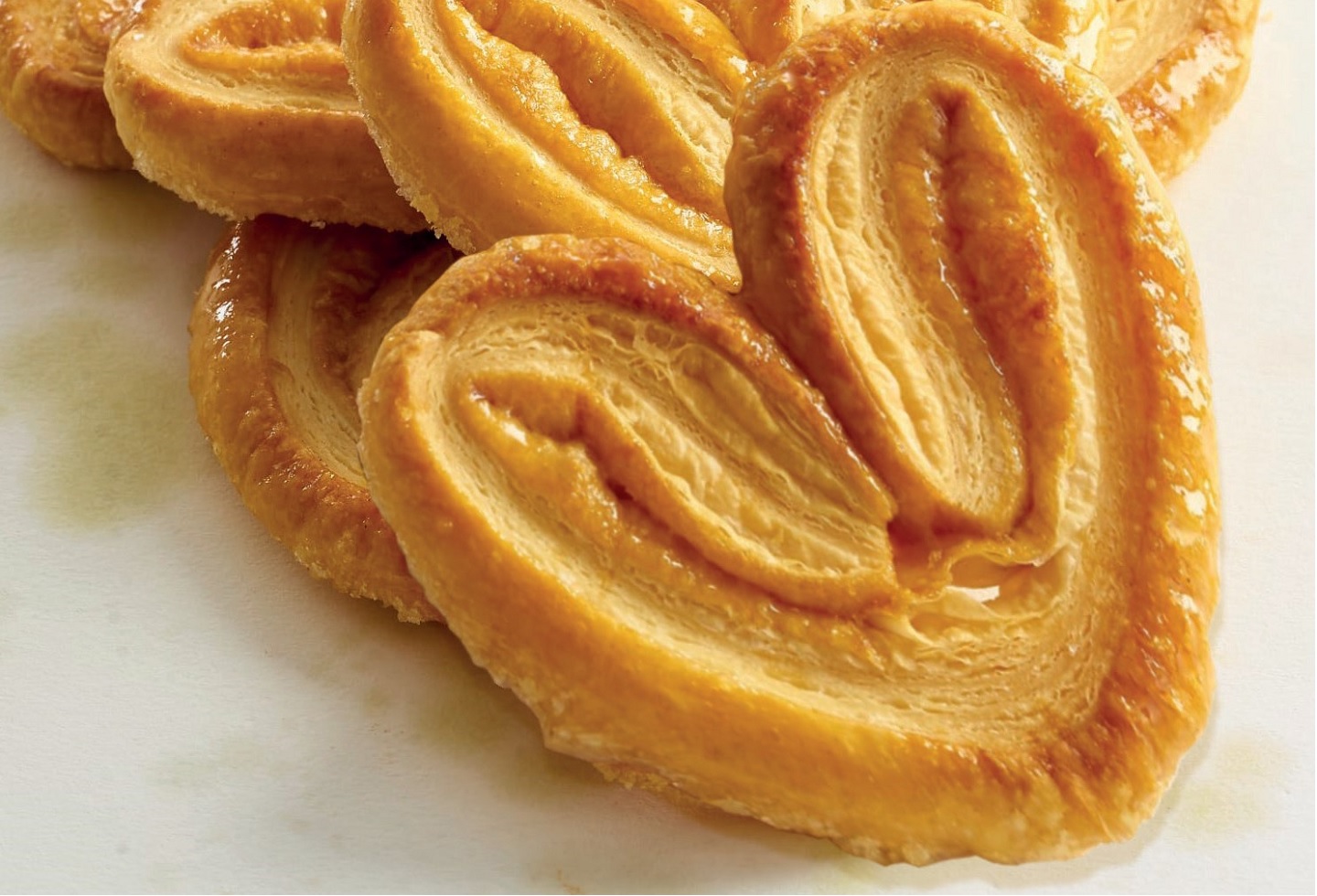11 January 2021
While the recipe contains just three simple ingredients, the palmier packs a powerful punch. In recent years, the palmier has become one of the most beloved pastries in Hong Kong. The l’hotel team’s new signature heart-shaped palmier pastry will be available for sale at its hotels.
The palmier, or palmier cookie, as in French, is nicknamed as a “pig’s ear”, “elephant’s ear” or “palm leaf” because of its shape. In the Latin American world, they call it “orejas”, which means “ear” in Spanish. At a German bakery, it would be called simply a “pig’s ear”, as the bakery staff would likely be perplexed with the word “palmier”. In Hong Kong, surprisingly the nickname is a bit more elegant – and is known as a “butterfly pastry”. It is believed that the palm-sized pastry originated in Europe in the early 20th century. However, its origin remains controversial to this day. Most people think it is of French origin, while others insist that it originated in Australia, Germany or the Middle East.
For centuries, palmiers have travelled around the globe and become a favourite snack worldwide, especially in China and Japan. It even became the “signature snack” of the Chinese cities of Beijing and Shanghai. Twenty years ago, you probably would not see freshly made palmiers everywhere, rather they would only be found in certain hotels and traditional bakeries in Hong Kong. Nowadays, with the increasing popularity of Western and Japanese bakeries and palmier stores, freshly made palmiers have become more available. Palmiers taste heavenly: they are buttery, crispy, sweet, and have a more delicate shape than traditional cookies.
What is the secret of making these tiny little deliciously flaky palmiers? It all boils down to passion, rather than technique or skill. After all, the palmier is nothing but butter, flour and sugar. A good dough of tender, crunchy and buttery puff pastry takes time to make. The baker must be patient; palmier dough can’t be rushed. The baker must fold the butter into the flour to make the dough, folding the buttery layers repeatedly. It has to be folded quickly or else the butter becomes too soft and it will be hard to handle. The pastry is then rested in the fridge for as many as two to three days. Once chilled, the dough is cut and shaped into a palm-sized butterfly, and sugar is added to the top or the edge. After a high-heat baking this caramelised delicacy is complete.
Every step counts and it is a fundamental incarnation of bakery wisdom and art. This small pastry is a celebration of a century of history. Baked with heart and soul, the lovely little treats are delicate and comforting when paired with a cup of Earl Grey tea.
The palmier, or palmier cookie, as in French, is nicknamed as a “pig’s ear”, “elephant’s ear” or “palm leaf” because of its shape. In the Latin American world, they call it “orejas”, which means “ear” in Spanish. At a German bakery, it would be called simply a “pig’s ear”, as the bakery staff would likely be perplexed with the word “palmier”. In Hong Kong, surprisingly the nickname is a bit more elegant – and is known as a “butterfly pastry”. It is believed that the palm-sized pastry originated in Europe in the early 20th century. However, its origin remains controversial to this day. Most people think it is of French origin, while others insist that it originated in Australia, Germany or the Middle East.
For centuries, palmiers have travelled around the globe and become a favourite snack worldwide, especially in China and Japan. It even became the “signature snack” of the Chinese cities of Beijing and Shanghai. Twenty years ago, you probably would not see freshly made palmiers everywhere, rather they would only be found in certain hotels and traditional bakeries in Hong Kong. Nowadays, with the increasing popularity of Western and Japanese bakeries and palmier stores, freshly made palmiers have become more available. Palmiers taste heavenly: they are buttery, crispy, sweet, and have a more delicate shape than traditional cookies.
What is the secret of making these tiny little deliciously flaky palmiers? It all boils down to passion, rather than technique or skill. After all, the palmier is nothing but butter, flour and sugar. A good dough of tender, crunchy and buttery puff pastry takes time to make. The baker must be patient; palmier dough can’t be rushed. The baker must fold the butter into the flour to make the dough, folding the buttery layers repeatedly. It has to be folded quickly or else the butter becomes too soft and it will be hard to handle. The pastry is then rested in the fridge for as many as two to three days. Once chilled, the dough is cut and shaped into a palm-sized butterfly, and sugar is added to the top or the edge. After a high-heat baking this caramelised delicacy is complete.
Every step counts and it is a fundamental incarnation of bakery wisdom and art. This small pastry is a celebration of a century of history. Baked with heart and soul, the lovely little treats are delicate and comforting when paired with a cup of Earl Grey tea.
